During the past six years as a birder, my interests in butterflies, dragonflies, and other animals have grown. This seems to be common among conservationists, as an interest in one area often sparks interests in others. I love birds personally! Insects, especially butterflies, are a growing interest however. Guides, books, and hobbyists all seem to gear toward this overlap.
Similar to my past with birds, I am learning how to identify species by taking pictures and studying them at home. Below are select insect photos I've taken over this past month at the Overland Park Arboretum. You can click on each of them to see larger, more detailed versions. The Arboretum is fairly close and has become a common photo destination for me individually and with the family.
Similar to my past with birds, I am learning how to identify species by taking pictures and studying them at home. Below are select insect photos I've taken over this past month at the Overland Park Arboretum. You can click on each of them to see larger, more detailed versions. The Arboretum is fairly close and has become a common photo destination for me individually and with the family.
Skippers are currently my favorite family of butterflies. They exhibit quick, darting flight are usually fairly small and orange or brown in color. Some species prefer to rest with their wings shut while others rest with wings perfectly flat or partially spread.
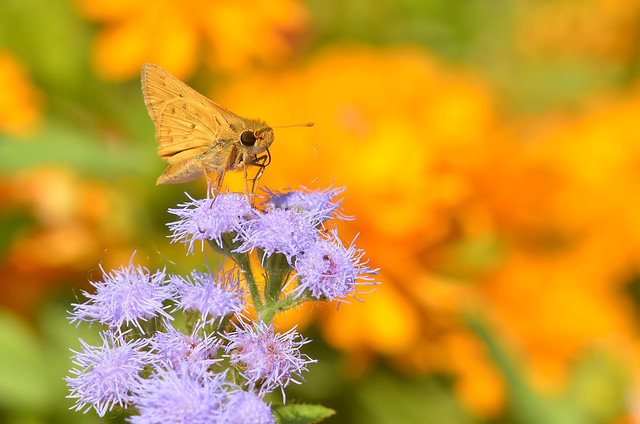 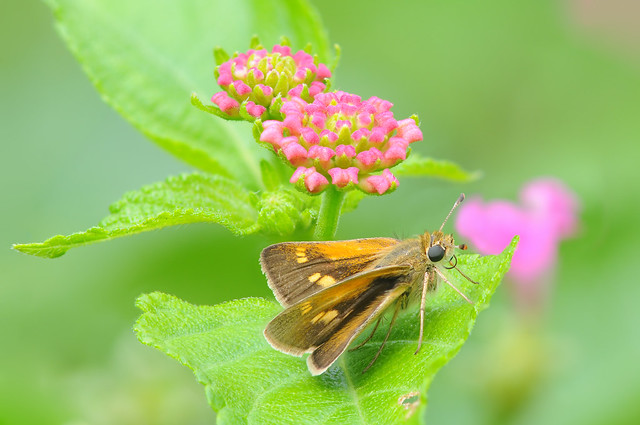 The Fiery skipper (left) and Tawny-edged skipper (right) often rest with wings together.   |
| The Delaware skipper (left) and Horace's Duskywing (right) hold their wings differently at rest. |
Unlike most bird species, many insects are well-behaved photography subjects and remain fairly still. They also tend to stick around in the same general area rather than flying away. Having stationary objects allows me to practice photography techniques in addition to studying the species. One technique I attempt to increase sharpness and appearance of digital photos is focal stacking, where multiple images are merged together. Essentially it takes the good portions of each photo to make one master composite that is better than each of the individual pieces. This technique is particularly useful with macro photography where a small subject is close to the camera. This technique allows for great detail by overcoming the limits of normal lenses. The Eastern-tailed Blue photo below is an example where I used focal stacking as one frame did not have the tip of the flower, tip of the antenna, wings, tail, eye, or flower pedal all in focus. Instead I used 10 different photos and put them together in the digital darkroom.
Brush footed Butterflies are a diverse family of butterflies named for the adult butterfly's front pair of legs that are modified into two small "brushes". This family is one that often draws my attention with their color and size.
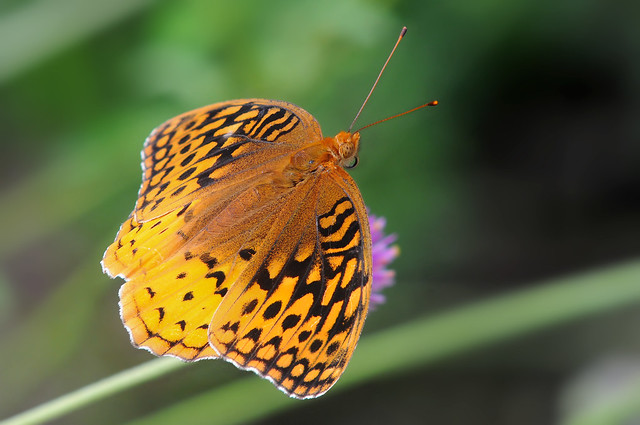 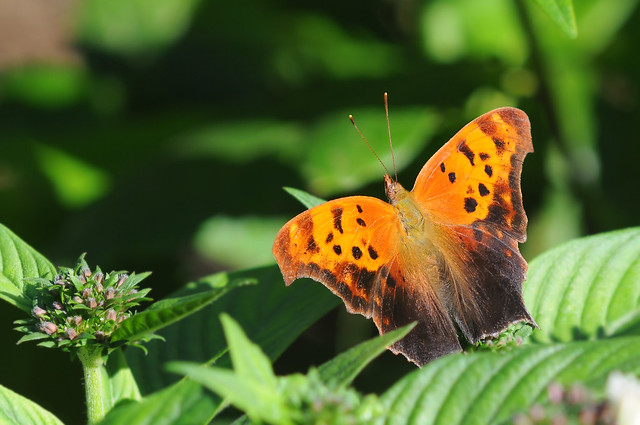 |
| The Great Spangled Fritillary (left) and Question Mark (right) are species within this family. |
This Painted Lady was seen on Sunday of this past weekend after watching a juvenile Green Heron. The other butterfly photo from that excursion was the above Fiery skipper.
In my search for butterflies, other species and families often appear. The Snowberry Clearwing is a member of the sphinx moth family with big and sometimes colorful relatives. The girls often think they are bees at first based on color and size. Sphinx moths appear to dart in and out of flowers like hummingbirds as well, and are a joy to watch. Capturing a sharp photo of anything in flight remains elusive and seems to be a challenge requiring more time.
Someday I'll expand my quests outside of Lepidoptera (Moths and Butterflies), but so far I have limited experience and photographs. Dang spiders seem cool!
 |
| This Green Stink Bug walked to the edge of the leaf and paused before taking flight. |
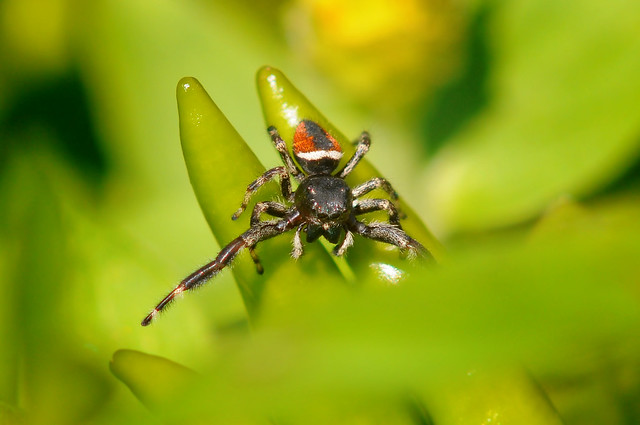 |
| While butterflies receive much attention due to color, other families receive much less. This Jumping Spider may be Phidippus clarus. |
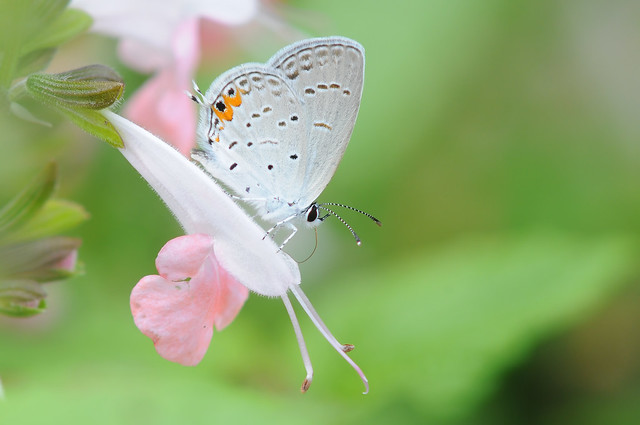
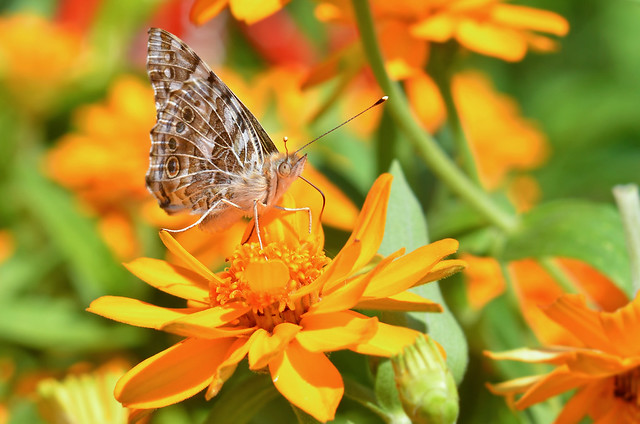
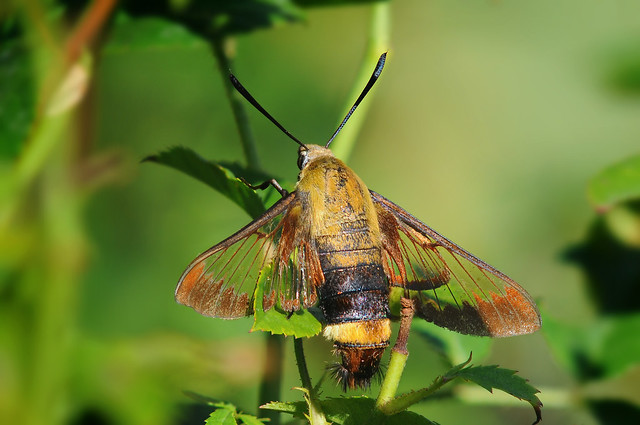
No comments:
Post a Comment